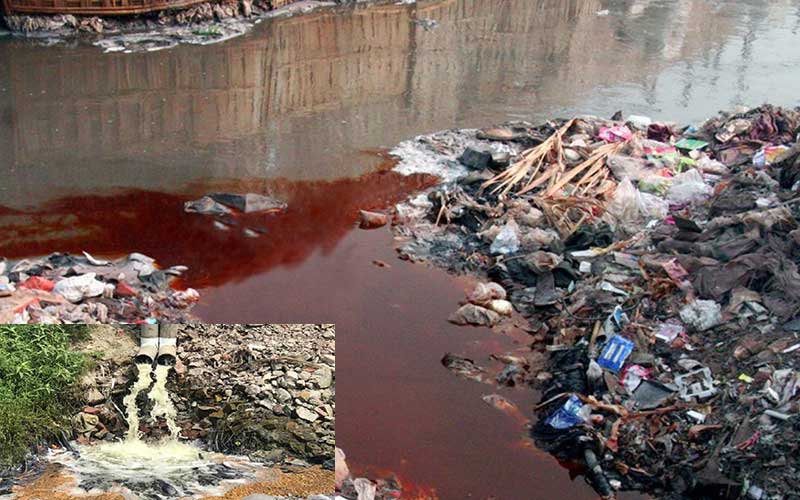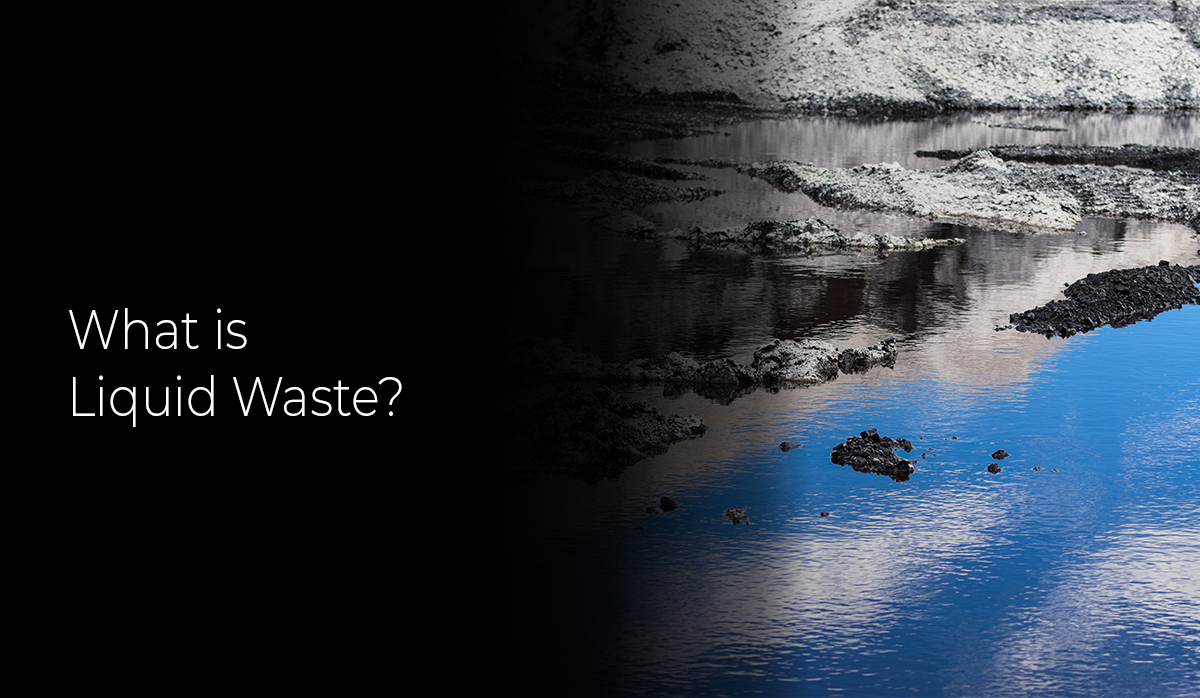Industrial Wastewater Treatment: Customized Solutions for Complicated Wastewater Obstacles
Industrial Wastewater Treatment: Customized Solutions for Complicated Wastewater Obstacles
Blog Article
Just How Fluid Waste Disposal Works: A Comprehensive Overview of Strategies and Technologies Utilized

Introduction of Liquid Waste Kind
The complexity of fluid waste kinds requires a complete understanding of their characteristics and ramifications for disposal. Fluid waste can generally be categorized right into numerous types, including industrial, municipal, farming, and contaminated materials. Each group shows distinct properties, needing details monitoring methods to alleviate environmental and wellness dangers.
Industrial liquid waste stems from producing processes and frequently includes a variety of impurities, such as heavy metals, solvents, and natural compounds. Metropolitan liquid waste, largely comprising wastewater from houses and industrial facilities, includes organic issue, nutrients, and pathogens (industrial wastewater treatment). Agricultural liquid waste, including overflow from farms, may consist of fertilizers, chemicals, and animal waste, posing dangers to water high quality and environments
Dangerous fluid waste is defined by its poisoning, sensitivity, or potential to trigger injury. This group consists of substances like acids, bases, and specific chemicals that demand rigid handling and disposal methods. Recognizing these varied liquid waste types is critical for developing efficient disposal approaches and making sure conformity with ecological laws. Proper category and characterization are essential for implementing ideal therapy methods and lessening the unfavorable influence on public wellness and the atmosphere.
Physical Treatment Approaches

Testing is the first action, where larger bits and debris are removed from the liquid waste utilizing displays or grates. This process protects downstream devices from damage and makes sure smoother procedure. Complying with testing, sedimentation uses gravitational pressure to different solids from liquids. In sedimentation storage tanks, much heavier fragments resolve at the base, creating a sludge layer, while the cleared up fluid can be additional dealt with.
Filtering is an additional crucial method that entails passing the fluid through porous products, such as sand or membrane layers, to record smaller sized particles. This step boosts the top quality of the liquid, making it appropriate for succeeding treatment procedures.

Chemical Treatment Techniques
Chemical therapy techniques are crucial for properly handling fluid waste, specifically in attending to liquified and colloidal impurities that physical methods might not adequately get rid of. These techniques use numerous chemical representatives to reduce the effects of, speed up, or transform harmful substances right into less unsafe kinds.
One common approach is coagulation and flocculation, where chemicals such as alum or ferric chloride are included in advertise the gathering of put on hold fragments. This process improves sedimentation, enabling easier elimination of the resulting sludge. Additionally, oxidation processes, using agents like chlorine or ozone, are employed to damage down complex organic substances and pathogens, making the waste much safer for discharge or additional therapy.
Neutralization is another essential technique, which adjusts the pH of acidic or alkaline waste streams to neutral levels, stopping prospective harm to downstream systems and the environment. In addition, progressed oxidation processes (AOPs) make use of combinations of oxidants and ultraviolet light to break down consistent toxins, accomplishing a higher level of therapy effectiveness.
Organic Therapy Processes
Organic treatment procedures play an important role in the monitoring of fluid waste by making use of microbes to decompose organic issue and lower contaminant degrees. These procedures can be generally categorized into anaerobic and cardiovascular treatments, each employing certain microbial neighborhoods to achieve efficient waste deterioration.
Cardiovascular treatment involves the usage of oxygen to promote the break down of organic materials by germs. This process is commonly implemented in activated sludge systems, where oygenation containers offer a conducive see page environment for microbial development, resulting in the oxidation of natural toxins. The resultant biomass can be separated from treated effluent through sedimentation.
On the other hand, anaerobic therapy takes place in the lack of oxygen, counting on different microorganisms to break down raw material. This technique is specifically useful for high-strength waste, as it produces biogas, an eco-friendly energy resource, while minimizing sludge production. Technologies such as anaerobic digesters are regularly used in commercial and municipal applications.
Both anaerobic and cardio biological treatments not only reduce the ecological effect of liquid waste yet likewise assist in resource recuperation, making them essential components of lasting waste monitoring methods. Their effectiveness, adaptability, and efficiency sustain their prevalent execution across different industries.
Emerging Technologies in Disposal
Cutting-edge strategies to liquid garbage disposal are quickly progressing, driven by innovations in modern technology and a boosting emphasis on sustainability. Amongst these arising technologies, membrane bioreactors (MBRs) have actually acquired grip for their capability to incorporate biological treatment with membrane filtration, resulting in top notch effluent that can be recycled in different applications. MBRs allow smaller impacts and extra reliable operations contrasted to traditional systems.
One more appealing development is using anaerobic food digestion integrated with nutrient recovery technologies, which not only treats fluid waste but likewise produces biogas and recovers beneficial nutrients like nitrogen and phosphorus. This dual advantage boosts source efficiency and decreases environmental effect.
Furthermore, progressed oxidation procedures (AOPs) pop over to this web-site are being embraced for the deterioration of intricate organic toxins. These approaches make use of effective oxidants and catalysts to damage down contaminants at the molecular degree, offering a highly effective solution for challenging waste streams.
Furthermore, the assimilation of expert system and artificial intelligence in waste monitoring systems is enhancing operational effectiveness and predictive upkeep, leading to reduced expenses and boosted environmental compliance. These innovations show a significant shift towards even more sustainable and efficient fluid garbage disposal techniques.
Final Thought
In final thought, efficient fluid waste disposal requires a thorough understanding of numerous techniques and innovations. By continuously progressing these approaches, it ends up being feasible to attend to the expanding difficulties connected with liquid waste, ultimately adding to ecological protection and resource healing.
Fluid waste disposal is a vital facet of environmental monitoring, needing a thorough understanding of different techniques and technologies customized to different waste kinds. Liquid waste can extensively be classified into several types, including industrial, local, agricultural, and hazardous waste. Agricultural liquid waste, including runoff from farms, might include fertilizers, chemicals, and pet official statement waste, positioning risks to water top quality and environments.
Numerous physical treatment methods play a vital function in taking care of liquid waste successfully - industrial wastewater treatment.In verdict, effective liquid waste disposal requires a thorough understanding of numerous methods and technologies
Report this page